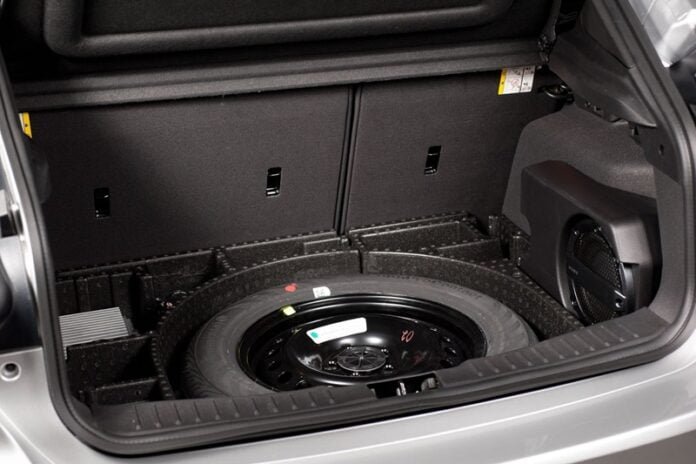Tires and Tread Depth
Tires are fundamental to ensuring safe driving, especially during stormy weather. The tread depth of a tire is particularly crucial because it directly impacts the vehicle’s ability to grip wet and slippery surfaces. A tire with adequate tread depth can significantly enhance traction, reducing the risk of hydroplaning on waterlogged roads. Industry standards recommend a minimum tread depth of 2/32 of an inch. However, for optimal safety during stormy conditions, a tread depth of 4/32 of an inch is generally advised.
Proper tire pressure is another vital factor that affects vehicle stability, particularly in adverse weather conditions. Under-inflated or over-inflated tires can compromise handling and braking performance. It’s advisable to check tire pressure regularly, ensuring it aligns with the manufacturer’s specifications. Doing so can enhance fuel efficiency and extend tire lifespan while providing better control during stormy weather.

Tire wear is an inevitable factor that affects overall vehicle performance. Uneven or excessive tire wear can impair traction and increase the likelihood of accidents, especially on slippery roads. Routine inspections for signs of wear, such as cracks, bulges, or bald spots, are indispensable. If such signs are present, it may be time to consider replacing the tires.
To inspect tires for damage, one should not only check the outer tread but also the sidewalls and inner surface. Utilizing a tread depth gauge can provide accurate readings to determine if the treads are within the recommended limits. Additionally, performing the penny test—where a penny is inserted into the tread groove with Lincoln’s head upside down—can also serve as a quick check to assess tread depth. If the top of Lincoln’s head is visible, it indicates the need for tire replacement.
In summary, giving meticulous attention to the condition of your vehicle’s tires and tread depth is essential for ensuring safety during stormy days. Investing time in regular inspections and maintenance can prevent potential hazards and ensure a safer driving experience under adverse weather conditions.
Windshield Wipers and Washer Fluid
Maintaining effective visibility during stormy conditions is paramount for safe driving. One critical aspect of ensuring clear vision is the proper maintenance of windshield wipers and washer fluid. Windshield wipers are often underappreciated until they fail during adverse weather. It’s essential to regularly inspect and replace worn-out wiper blades. Worn blades can leave streaks on the windshield, significantly impairing visibility. Indicators of wear include streaking, skipping, or an unusual noise during operation. Ideally, wiper blades should be replaced every six months to a year, depending on usage and exposure to elements.
Choosing the right washer fluid is another vital consideration for maintaining a clean and clear windshield. High-quality washer fluids designed for all-weather use are recommended, as they contain additives that can effectively remove grime, road salt, and insects. During winter months or in colder climates, it is advisable to use washer fluids with anti-freeze properties to prevent the fluid from freezing on the windshield and in the reservoir.
Additionally, the benefits of rain-repellent treatments like silicone-based coatings cannot be overstated. These treatments create a hydrophobic layer on the windshield that causes water to bead up and roll off more efficiently, drastically improving visibility during heavy rain. Application of such treatments is relatively simple and can often be done at home, ensuring you can see clearly even in the worst downpours.
Testing the washer system is equally essential. Before embarking on a journey in stormy weather, ensure the washer jets are not clogged and are aimed correctly to cover the entire windshield area. This process can be easily checked by activating the washer system and observing the spray pattern. If any inconsistencies are found, clean the jets with a pin or replace them if necessary. Regularly checking the washer fluid level and topping it up as needed will ensure you do not run out when you need it most.
In closing, ensuring your windshield wipers and washer system are in optimal condition is a crucial step toward safe driving during storms. By following the guidelines on inspecting, maintaining, and testing these components, you can significantly enhance your visibility and safety on the road.
Braking System
A reliable braking system is paramount during stormy conditions due to the increased stopping distances typically encountered on wet or slippery roads. To ensure safety, it is essential to understand and regularly inspect the different components of the braking system, which include brake pads, rotors, and brake fluid.
Brake pads play a crucial role in the stopping power of your vehicle. Over time, they can wear down, leading to reduced effectiveness. To check for wear, inspect the brake pads through the wheel spokes: a minimum of one-quarter inch of pad should remain. If the pads appear thinner or you hear a screeching noise when braking, it is likely time for a replacement.
Next, examine the brake rotors, which must remain smooth and free of deep grooves or scoring. These discs interact with the brake pads and can develop rust, warping, or hot spots that compromise braking performance. Run your fingers lightly over the rotors’ surface; any irregularity indicates the need for professional assessment or replacement.
Brake fluid is another critical component, acting as the medium that transfers the force from your foot on the brake pedal to the actual braking mechanism. Over time, brake fluid can absorb moisture from the environment, leading to decreased efficacy and the potential for brake failure. Check the brake fluid reservoir regularly and ensure the fluid is within the optimal range, clear, and free from contaminants. A recommended practice is to replace the brake fluid every two years or as specified by the vehicle’s manufacturer.
Stormy weather poses unique challenges, including the risk of water infiltration into the braking system, which can reduce braking effectiveness. To mitigate this, inspect for any leaks or entry points where water might penetrate. Regular maintenance, such as professional brake inspections and timely component replacements, will help prevent these issues and ensure your braking system remains fully functional and reliable.
“`html
Lighting and Electrical Components
Driving during stormy days necessitates optimal visibility, crucial not only for seeing the road ahead but also for ensuring that other drivers can see your vehicle. It is imperative to perform regular checks on all lighting components including headlights, taillights, fog lights, and turn signals to maintain safety in adverse weather conditions.
Begin your inspection with the headlights, as these are your primary source of illumination during low visibility conditions. Ensure both low and high beams are functioning correctly. Check for any burned-out bulbs and replace them as needed. Also, clean the headlight lenses to remove any dirt or fogging which could diminish their brightness.
Next, examine the taillights and brake lights. These lights are vital for communicating to drivers behind you when you are slowing down or stopping. Verify that the bulbs are working and that the lenses are clean and clear. If any bulbs appear dim or fail to light up, replace them promptly.
Fog lights, while often overlooked, are essential during heavy rain or fog. Test these lights and clean their lenses to ensure maximum effectiveness. Additionally, turn signals should be checked to make sure they indicate your intended direction correctly. Any malfunction could lead to dangerous situations, particularly when road conditions are already compromised.
An often neglected area is the electrical connections of these lighting components. With the vehicle turned off, inspect the wiring and connectors for any signs of wear, corrosion, or looseness. Secure any loose connections and replace any corroded or damaged wires to prevent electrical failures.
By maintaining functional lighting and secure electrical connections, you not only enhance your own visibility but also make sure others can see you, thereby reducing the risk of accidents during stormy weather. These steps are foundational for safe driving in any adverse conditions.


